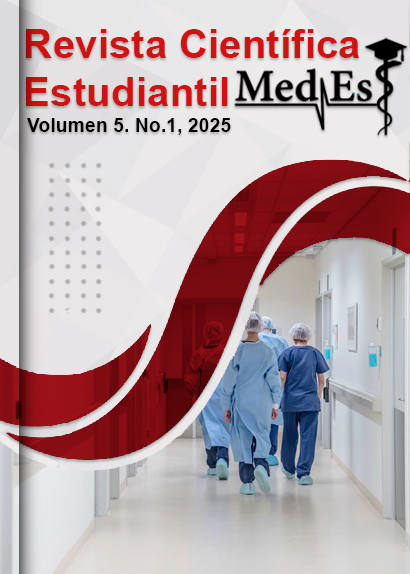Evolution of chemical accidents and mass poisonings in Cuba: an analysis from 2010-2024
Keywords:
chemical accidents, risk management, massive poisoning, Public healthAbstract
In recent years, Cuba has faced a growing problem of chemical accidents (CA) and mass poisonings (MP). This analysis highlights the importance of addressing this current situation, especially between 2010 and 2024, given that various incidents have highlighted deficiencies in chemical risk management. Factors such as obsolete industrial infrastructure and a lack of personnel training have contributed to the high incidence of these events. Significant examples include the mass methanol poisoning in 2013 and the fire in Matanzas in 2022, which triggered evacuations and injuries. Likewise, ammonia leaks and the collapse at the Antonio Guiteras Thermoelectric Plant highlight the urgent need to strengthen safety regulations and worker training. It is imperative to promote a culture of risk prevention in communities and establish educational campaigns, as well as improve inter-institutional collaboration to safeguard public health.Downloads
References
1. de la Osa JA, Gómez SA. La labor coordinada ayuda a salvar muchas vidas. Granma [Internet]. 2013 [citado 16/10/2024]; p. 2. Disponible en: https://www.granma.cu/granmad/2013/08/01/nacional/artic06.html
2. Venegas-Justiniano Y, Rosales-Mendoza K, EnríquezAlmanza B, Valdivia-Infantas M, Barboza-Pastrana A, HurtadoAréstegui A. Intoxicación por metanol: análisis de una serie de casos en dos Hospitales Públicos. Acta Med Peru. 2024 [citado 16/10/2024]; 41(1): 032-9. doi: https://doi.org/10.35663/amp.2024.411.2775
3. Rodríguez Milian Y. Breve cronología del incendio en la Base de Supertanqueros de Matanzas. Granma [Internet]. 2022 [citado 16/10/2024]; p. 2. Disponible en: https://www.granma.cu
4. Solanelles Rojas AM, Rodríguez Lora H, Lima Sarmiento L. Visión sistémica para respuesta médica a emergencias químicas por amoníaco del policlínico “Julián Grimau”. Rev Cubana Salud Pública [Internet]. 2020 [citado 16/10/2024]; 46(4):. Disponible en: http://scielo.sld.cu/scielo.php?script=sci_arttext&pid=S0864-34662020000400014&lng=es
5. Ustariz E. Controlan escapede gas anomiaco debido a la rotura de una tubería en una cámara de frio de COPMAR. Tribuna [Internet]. 2022 [citado 16/10/2024];:p. 2. Disponible en: https://www.tribuna.cu
6. Mendoza medna J. Camaguey: Registran escape de anoniaco en Fábrica de Cervezas Tinima, sin consecuencias para la salud. [Internet]. Cubadebate 2022 [citado 16/10/2024]. Disponible en: https://www.cubadebate.cu
7. Solanelles Rojas AM, Rodríguez Lora H, Apodaca Pérez EC. Estructura organizacional del policlínico “Julián Grimau” para la respuesta médica ante emergencias químicas por amoníaco. Rev Cubana Salud Pública [Internet]. 2021 [citado 16/10/2024]; 47(1):. Disponible en: http://scielo.sld.cu/scielo.php?script=sci_arttext&pid=S0864-34662021000100006&lng=es
8. Rizo Martínez PA. Reportan derrumbe de un tabique en el area de la chimenea de la Centra lTermoelectrica Antonio Guiteras. [Internet]. Cubadebate 2023 [citado 16/10/2024]. Disponible en: https://www.cubadebate.cu
Downloads
Published
How to Cite
Issue
Section
License
Copyright (c) 2025 Jurek Guirola-Fuentes, Maile Salgado-Cruz, Pedro Ramón Fleites-Mestres

This work is licensed under a Creative Commons Attribution-NonCommercial 4.0 International License.
Those authors who have publications with this journal accept the following terms: The authors will retain their copyright and guarantee the journal the right of first publication of their work, which will be simultaneously subject to the Recognition License. Creative Commons that allows third parties to share the work as long as its author and its first publication in this magazine are indicated. Authors may adopt other non-exclusive license agreements for the distribution of the published version of the work (e.g.: deposit it in an institutional telematic archive or publish it in a monographic volume) as long as the initial publication in this journal is indicated. Authors are allowed and recommended to disseminate their work through the Internet (e.g.: in institutional telematic archives or on your website) before and during the submission process, which can produce interesting exchanges and increase citations of the published work.





